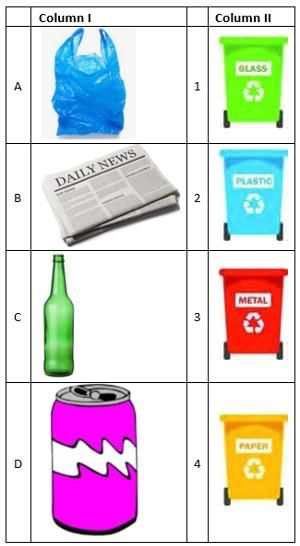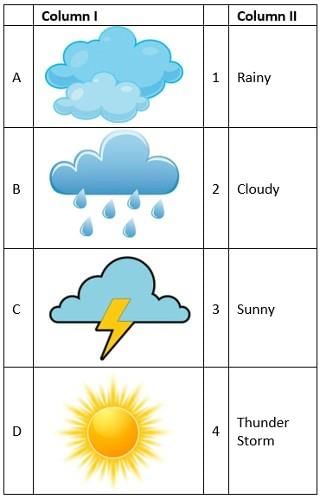All Exams >
Grade 2 >
Science for Grade 2 >
All Questions
All questions of Local Landscapes for Grade 2 Exam
_____water is not used for drinking.- a)
 Well
Well - b)
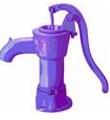 Handpump
Handpump - c)
 Sea
Sea
Correct answer is option 'C'. Can you explain this answer?
_____water is not used for drinking.
a)
 Well
Wellb)
 Handpump
Handpumpc)
 Sea
Sea|
|
Pranav Singh answered |
Seawater is toxic to humans because your body is unable to get rid of the salt that comes from seawater. Your body's kidneys normally remove excess salt by producing urine, but the body needs freshwater to dilute the salt in your body for the kidneys to work properly.
Which of the following is used as source of drinking water?- a)Tap water
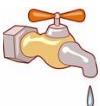
- b)Puddle water

- c)River water

Correct answer is option 'A'. Can you explain this answer?
Which of the following is used as source of drinking water?
a)
Tap water 

b)
Puddle water 

c)
River water 

|
|
Pranav Singh answered |
Tap water:- This is water that is delivered to the point of demand through a network of pipeline. Usually, it is expected to be safe for human consumption and other domestic demand. The water may be clean at it source like ground water, while some time it may require quality improvement through it treatment, example water from the lake, Dams or rivers. There are different types of water treatment methods.
____ is the basic need of our life.- a)Water
- b)Rocks
- c)Stones
Correct answer is option 'A'. Can you explain this answer?
____ is the basic need of our life.
a)
Water
b)
Rocks
c)
Stones
|
|
Pranav Singh answered |
Human beings have certain basic needs. We must have food, water, air, and shelter to survive. If any one of these basic needs is not met, then humans cannot survive.
What do we get from rain?- a)Sunlight
- b)Germs
- c)Water
Correct answer is option 'C'. Can you explain this answer?
What do we get from rain?
a)
Sunlight
b)
Germs
c)
Water
|
|
Pranav Singh answered |
We get water from rain. Ponds and puddles are also filled with rain water. But not only this, the rain water also seeps inside the ground. In the space between the stones, sand, pebbles etc. which are under the soil, water keeps going down by seeping through the holes and crevices. The water that seeps down is groundwater, the same water we get in wells.
What do we call the drops of water that fall from the sky when it rains?- a)Snowflakes
- b)Dew drops
- c)Water drops
- d)Raindrops
Correct answer is option 'D'. Can you explain this answer?
a)
Snowflakes
b)
Dew drops
c)
Water drops
d)
Raindrops
|
|
Aditi Sharma answered |
The drops of water that fall from the sky when it rains are called raindrops. Snowflakes are different and fall as snow, dew drops are the ones on leaves in the morning, and water drops is a general term.
Which is the largest river in the world?
- a)Ganges
- b)Nile
- c)Amazon river
- d)Danube river
Correct answer is option 'C'. Can you explain this answer?
Which is the largest river in the world?
a)
Ganges
b)
Nile
c)
Amazon river
d)
Danube river
|
|
Swati Sharma answered |
Amazon is the largest river in the world.
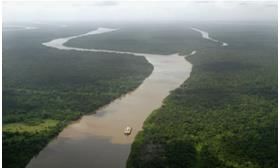

_____________is the largest ocean in the world.- a)Indian Ocean
- b)Atlantic Ocean
- c)Pacific Ocean
- d)Arctic Ocean
Correct answer is option 'C'. Can you explain this answer?
_____________is the largest ocean in the world.
a)
Indian Ocean
b)
Atlantic Ocean
c)
Pacific Ocean
d)
Arctic Ocean
|
|
Nitin naidu answered |
The Pacific Ocean is the largest ocean in the world.
The Pacific Ocean is the largest and deepest ocean in the world, covering an area of approximately 63 million square miles (165 million square kilometers). It stretches from the Arctic Ocean in the north to the Southern Ocean in the south and is bordered by the continents of Asia and Australia to the west and the Americas to the east.
Key Points:
- The Pacific Ocean covers a significant portion of the Earth's surface, accounting for about one-third of the total area.
- It is larger than all the other oceans combined, including the Atlantic Ocean, Indian Ocean, and Arctic Ocean.
- The Pacific Ocean is shaped like a broad basin, with its widest point located between Indonesia and the coast of Colombia, spanning approximately 19,000 kilometers (11,800 miles).
- It is also the deepest ocean, with its average depth reaching about 12,080 feet (3,682 meters).
- The Pacific Ocean is known for its vast size and numerous islands, including Hawaii, Fiji, Tahiti, and the Galapagos Islands.
- It is home to a diverse range of marine life, including whales, dolphins, sharks, and various species of fish and coral reefs.
- The Pacific Ocean is also significant for its role in global climate patterns, influencing weather systems and ocean currents.
- It experiences the Pacific Decadal Oscillation (PDO), a long-term climate cycle that affects sea surface temperatures and weather patterns in the region.
- The Pacific Ocean is not only important for its ecological value but also for its economic significance, supporting various industries such as fishing, tourism, and shipping.
In conclusion, the Pacific Ocean is the largest ocean in the world, covering a vast area and playing a crucial role in global climate patterns and the global economy.
The Pacific Ocean is the largest and deepest ocean in the world, covering an area of approximately 63 million square miles (165 million square kilometers). It stretches from the Arctic Ocean in the north to the Southern Ocean in the south and is bordered by the continents of Asia and Australia to the west and the Americas to the east.
Key Points:
- The Pacific Ocean covers a significant portion of the Earth's surface, accounting for about one-third of the total area.
- It is larger than all the other oceans combined, including the Atlantic Ocean, Indian Ocean, and Arctic Ocean.
- The Pacific Ocean is shaped like a broad basin, with its widest point located between Indonesia and the coast of Colombia, spanning approximately 19,000 kilometers (11,800 miles).
- It is also the deepest ocean, with its average depth reaching about 12,080 feet (3,682 meters).
- The Pacific Ocean is known for its vast size and numerous islands, including Hawaii, Fiji, Tahiti, and the Galapagos Islands.
- It is home to a diverse range of marine life, including whales, dolphins, sharks, and various species of fish and coral reefs.
- The Pacific Ocean is also significant for its role in global climate patterns, influencing weather systems and ocean currents.
- It experiences the Pacific Decadal Oscillation (PDO), a long-term climate cycle that affects sea surface temperatures and weather patterns in the region.
- The Pacific Ocean is not only important for its ecological value but also for its economic significance, supporting various industries such as fishing, tourism, and shipping.
In conclusion, the Pacific Ocean is the largest ocean in the world, covering a vast area and playing a crucial role in global climate patterns and the global economy.
How many oceans are on Earth?- a)7
- b)5
- c)3
- d)6
Correct answer is option 'B'. Can you explain this answer?
How many oceans are on Earth?
a)
7
b)
5
c)
3
d)
6
|
|
Ravi dey answered |
Explanation:
Ocean is a large body of salt water that covers a vast majority of the Earth's surface. There are a total of 5 oceans on Earth.
Atlantic Ocean: The Atlantic Ocean is the second-largest ocean in the world, covering approximately 20% of the Earth's surface.
Pacific Ocean: The Pacific Ocean is the largest ocean in the world, covering approximately 30% of the Earth's surface.
Indian Ocean: The Indian Ocean is the third-largest ocean in the world and is located between Africa, Asia, Australia, and the Antarctic.
Southern Ocean: The Southern Ocean is the newest named ocean and is located around the continent of Antarctica.
Arctic Ocean: The Arctic Ocean is the smallest and shallowest of the world's oceans and is located in the Arctic region.
These 5 oceans make up the vast majority of the Earth's water bodies and play a crucial role in regulating the planet's climate and weather patterns.
Ocean is a large body of salt water that covers a vast majority of the Earth's surface. There are a total of 5 oceans on Earth.
Atlantic Ocean: The Atlantic Ocean is the second-largest ocean in the world, covering approximately 20% of the Earth's surface.
Pacific Ocean: The Pacific Ocean is the largest ocean in the world, covering approximately 30% of the Earth's surface.
Indian Ocean: The Indian Ocean is the third-largest ocean in the world and is located between Africa, Asia, Australia, and the Antarctic.
Southern Ocean: The Southern Ocean is the newest named ocean and is located around the continent of Antarctica.
Arctic Ocean: The Arctic Ocean is the smallest and shallowest of the world's oceans and is located in the Arctic region.
These 5 oceans make up the vast majority of the Earth's water bodies and play a crucial role in regulating the planet's climate and weather patterns.
How much percentage of Earth is covered with water?- a)70%
- b)30%
- c)50%
- d)10%
Correct answer is option 'A'. Can you explain this answer?
How much percentage of Earth is covered with water?
a)
70%
b)
30%
c)
50%
d)
10%
|
|
Pranav Singh answered |
70% of Earth is covered with water, while 30% is covered with land.
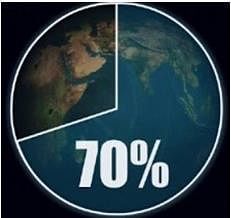

What shape is a glass of water?- a)Square
- b)Round
- c)Triangle
- d)It doesn't have a shape
Correct answer is option 'D'. Can you explain this answer?
a)
Square
b)
Round
c)
Triangle
d)
It doesn't have a shape
|
|
Akshita Sharma answered |
Shape of a Glass of Water
Water itself does not have a shape. When water is poured into a glass, it takes on the shape of the container it is in. Therefore, a glass of water does not have a specific shape.
Explanation
- Water molecules do not have a fixed shape because they can move freely and take the shape of their container.
- When water is poured into a glass, it conforms to the shape of the glass, whether it be square, round, triangular, or any other shape.
- The shape of the glass itself determines the shape of the water it holds, but the water molecules remain fluid and do not have a defined shape.
Conclusion
In conclusion, a glass of water does not have a shape of its own. It simply takes on the shape of the container it is poured into.
Water itself does not have a shape. When water is poured into a glass, it takes on the shape of the container it is in. Therefore, a glass of water does not have a specific shape.
Explanation
- Water molecules do not have a fixed shape because they can move freely and take the shape of their container.
- When water is poured into a glass, it conforms to the shape of the glass, whether it be square, round, triangular, or any other shape.
- The shape of the glass itself determines the shape of the water it holds, but the water molecules remain fluid and do not have a defined shape.
Conclusion
In conclusion, a glass of water does not have a shape of its own. It simply takes on the shape of the container it is poured into.
Why is water important for plants?- a)Plants can dance in water
- b)Plants use water to breathe
- c)Water makes plants grow candy
- d)Plants don't need water
Correct answer is option 'B'. Can you explain this answer?
a)
Plants can dance in water
b)
Plants use water to breathe
c)
Water makes plants grow candy
d)
Plants don't need water
|
|
Aarav Choudhury answered |
Importance of Water for Plants
Water is essential for plants for several reasons, and it plays a crucial role in their survival and growth.
1. Photosynthesis
- Water is vital for the process of photosynthesis, where plants convert sunlight into energy.
- During photosynthesis, plants take in carbon dioxide from the air and water from the soil to produce glucose and oxygen.
2. Nutrient Transport
- Water helps in transporting nutrients and minerals from the soil into the plant.
- It acts as a solvent, allowing essential nutrients to dissolve and be absorbed through the roots.
3. Turgor Pressure
- Water helps maintain turgor pressure in plant cells, which keeps them rigid and upright.
- This pressure is crucial for maintaining the plant’s structure and preventing wilting.
4. Temperature Regulation
- Water plays a role in regulating the temperature of plants.
- Through the process of transpiration, plants release water vapor which cools them down.
5. Cellular Functions
- Water is involved in various cellular processes within the plant.
- It is necessary for biochemical reactions and helps in the overall functioning of the plant cells.
In conclusion, while the idea of plants "breathing" may sound unusual, they indeed require water to absorb carbon dioxide and carry out vital processes that sustain their life. Thus, option 'B' is the correct answer, emphasizing the importance of water for plant health and growth.
Water is essential for plants for several reasons, and it plays a crucial role in their survival and growth.
1. Photosynthesis
- Water is vital for the process of photosynthesis, where plants convert sunlight into energy.
- During photosynthesis, plants take in carbon dioxide from the air and water from the soil to produce glucose and oxygen.
2. Nutrient Transport
- Water helps in transporting nutrients and minerals from the soil into the plant.
- It acts as a solvent, allowing essential nutrients to dissolve and be absorbed through the roots.
3. Turgor Pressure
- Water helps maintain turgor pressure in plant cells, which keeps them rigid and upright.
- This pressure is crucial for maintaining the plant’s structure and preventing wilting.
4. Temperature Regulation
- Water plays a role in regulating the temperature of plants.
- Through the process of transpiration, plants release water vapor which cools them down.
5. Cellular Functions
- Water is involved in various cellular processes within the plant.
- It is necessary for biochemical reactions and helps in the overall functioning of the plant cells.
In conclusion, while the idea of plants "breathing" may sound unusual, they indeed require water to absorb carbon dioxide and carry out vital processes that sustain their life. Thus, option 'B' is the correct answer, emphasizing the importance of water for plant health and growth.
Which of the following is the largest continent in the world?- a)Australia
- b)Asia
- c)Antarctica
- d)Africa
Correct answer is option 'B'. Can you explain this answer?
Which of the following is the largest continent in the world?
a)
Australia
b)
Asia
c)
Antarctica
d)
Africa
|
|
Harsh mehra answered |
Asia is the largest continent in the world.
Asia is the largest continent in the world in terms of both land area and population. Here are some key reasons why Asia holds the title of the largest continent:
- Land Area: Asia covers a vast area of about 44.58 million square kilometers, making it the largest continent on Earth. It is home to diverse landscapes, including deserts, mountains, plains, forests, and coastlines.
- Population: Asia is also the most populous continent, with over 4.6 billion people living within its borders. This accounts for more than half of the world's total population.
- Diversity: Asia is incredibly diverse, both culturally and geographically. It is home to numerous countries with rich histories, languages, traditions, and religions. The continent also boasts a wide range of climates and ecosystems.
- Economic Power: Many of the world's largest economies, such as China, Japan, India, and South Korea, are located in Asia. The continent plays a crucial role in global trade and commerce.
In conclusion, Asia's vast land area, large population, diversity, and economic significance all contribute to its status as the largest continent in the world.
Asia is the largest continent in the world in terms of both land area and population. Here are some key reasons why Asia holds the title of the largest continent:
- Land Area: Asia covers a vast area of about 44.58 million square kilometers, making it the largest continent on Earth. It is home to diverse landscapes, including deserts, mountains, plains, forests, and coastlines.
- Population: Asia is also the most populous continent, with over 4.6 billion people living within its borders. This accounts for more than half of the world's total population.
- Diversity: Asia is incredibly diverse, both culturally and geographically. It is home to numerous countries with rich histories, languages, traditions, and religions. The continent also boasts a wide range of climates and ecosystems.
- Economic Power: Many of the world's largest economies, such as China, Japan, India, and South Korea, are located in Asia. The continent plays a crucial role in global trade and commerce.
In conclusion, Asia's vast land area, large population, diversity, and economic significance all contribute to its status as the largest continent in the world.
In which of the following seasons, weather is neither too hot nor too cold?- a)Spring
- b)Summer
- c)Winter
- d)None of the above
Correct answer is option 'A'. Can you explain this answer?
In which of the following seasons, weather is neither too hot nor too cold?
a)
Spring
b)
Summer
c)
Winter
d)
None of the above
|
|
Sara singh answered |
Seasons and Weather
There are four seasons in a year, and each season has its own characteristics in terms of weather. Let's take a closer look at each season and the weather it brings.
Spring
Spring is the season that comes after winter and before summer. It is the season of new beginnings, and the weather during this time is neither too hot nor too cold. The temperature during spring is usually pleasant, with cool mornings and evenings and warm afternoons. The average temperature during spring is around 15°C to 20°C.
Summer
Summer is the season that comes after spring and before autumn. It is the hottest season of the year, and the weather during this time is usually very hot and dry. The temperature during summer can range from 25°C to 40°C or more, depending on the location.
Winter
Winter is the season that comes after autumn and before spring. It is the coldest season of the year, and the weather during this time is usually very cold and snowy. The temperature during winter can range from -10°C to 10°C, depending on the location.
None of the Above
Since both summer and winter have extreme temperatures, neither of them can be considered a season with weather that is neither too hot nor too cold. Therefore, the correct answer is option A, which is spring.
Conclusion
In conclusion, spring is the season that has weather that is neither too hot nor too cold. It is a season of new beginnings, and the temperature during this time is usually pleasant, with cool mornings and evenings and warm afternoons.
There are four seasons in a year, and each season has its own characteristics in terms of weather. Let's take a closer look at each season and the weather it brings.
Spring
Spring is the season that comes after winter and before summer. It is the season of new beginnings, and the weather during this time is neither too hot nor too cold. The temperature during spring is usually pleasant, with cool mornings and evenings and warm afternoons. The average temperature during spring is around 15°C to 20°C.
Summer
Summer is the season that comes after spring and before autumn. It is the hottest season of the year, and the weather during this time is usually very hot and dry. The temperature during summer can range from 25°C to 40°C or more, depending on the location.
Winter
Winter is the season that comes after autumn and before spring. It is the coldest season of the year, and the weather during this time is usually very cold and snowy. The temperature during winter can range from -10°C to 10°C, depending on the location.
None of the Above
Since both summer and winter have extreme temperatures, neither of them can be considered a season with weather that is neither too hot nor too cold. Therefore, the correct answer is option A, which is spring.
Conclusion
In conclusion, spring is the season that has weather that is neither too hot nor too cold. It is a season of new beginnings, and the temperature during this time is usually pleasant, with cool mornings and evenings and warm afternoons.
Which of the following statement is incorrect?- a)We should turn off taps after using water
- b)We can use rainwater for cooking
- c)We can use rainwater for cleaning floors
Correct answer is option 'B'. Can you explain this answer?
Which of the following statement is incorrect?
a)
We should turn off taps after using water
b)
We can use rainwater for cooking
c)
We can use rainwater for cleaning floors
|
|
Pranav Singh answered |
You can use the stored rainwater from your tank to clean your kitchen—that is, for washing and cleaning non–food preparation work surfaces, mopping floors, cleaning rags, etc. However, you cannot use untreated rainwater in food preparation and cleaning your kitchenware, utensils, etc
What is water?- a)A kind of food
- b)A liquid we drink
- c)A type of toy
- d)A type of clothing
Correct answer is option 'B'. Can you explain this answer?
a)
A kind of food
b)
A liquid we drink
c)
A type of toy
d)
A type of clothing
|
|
Niti verma answered |
Water: A Liquid We Drink
Water is a vital substance for all living organisms on Earth. It is a transparent, tasteless, and odorless liquid that covers approximately 71% of the planet's surface. Water exists in three states: solid (ice), liquid, and gas (water vapor). In this case, we are focusing on water as a liquid that we drink.
Importance of Water
Water plays a crucial role in maintaining the overall health and well-being of our bodies. It has several essential functions, including:
1. Hydration: Water is the primary component of our body fluids and is necessary for proper hydration. It helps regulate body temperature, lubricates joints, and aids in digestion.
2. Transportation: Water enables the transportation of nutrients, oxygen, and waste products throughout our body. It helps in the absorption and distribution of essential nutrients, ensuring the proper functioning of our cells and organs.
3. Metabolism: Water is involved in various metabolic processes within the body. It participates in chemical reactions, such as breaking down food and converting it into energy.
4. Waste Removal: Water helps flush out waste products and toxins from our bodies through urine, sweat, and bowel movements. It is essential for maintaining healthy kidney function.
5. Lubrication: Water acts as a lubricant for our joints, preventing friction and reducing the risk of injuries. It also keeps our eyes, mouth, and other mucous membranes moist.
6. Body Temperature Regulation: Water has a high heat capacity, which means it can absorb and release heat without a significant change in its own temperature. This property helps regulate our body temperature, preventing overheating or hypothermia.
7. Brain Function: Proper hydration is essential for optimal brain function. Water helps improve cognitive performance, concentration, and memory.
Conclusion
Water is a vital liquid that we drink to sustain life. Its importance cannot be overstated, as it is involved in numerous bodily functions. By understanding the significance of water and ensuring adequate hydration, we can maintain our health and well-being.
Water is a vital substance for all living organisms on Earth. It is a transparent, tasteless, and odorless liquid that covers approximately 71% of the planet's surface. Water exists in three states: solid (ice), liquid, and gas (water vapor). In this case, we are focusing on water as a liquid that we drink.
Importance of Water
Water plays a crucial role in maintaining the overall health and well-being of our bodies. It has several essential functions, including:
1. Hydration: Water is the primary component of our body fluids and is necessary for proper hydration. It helps regulate body temperature, lubricates joints, and aids in digestion.
2. Transportation: Water enables the transportation of nutrients, oxygen, and waste products throughout our body. It helps in the absorption and distribution of essential nutrients, ensuring the proper functioning of our cells and organs.
3. Metabolism: Water is involved in various metabolic processes within the body. It participates in chemical reactions, such as breaking down food and converting it into energy.
4. Waste Removal: Water helps flush out waste products and toxins from our bodies through urine, sweat, and bowel movements. It is essential for maintaining healthy kidney function.
5. Lubrication: Water acts as a lubricant for our joints, preventing friction and reducing the risk of injuries. It also keeps our eyes, mouth, and other mucous membranes moist.
6. Body Temperature Regulation: Water has a high heat capacity, which means it can absorb and release heat without a significant change in its own temperature. This property helps regulate our body temperature, preventing overheating or hypothermia.
7. Brain Function: Proper hydration is essential for optimal brain function. Water helps improve cognitive performance, concentration, and memory.
Conclusion
Water is a vital liquid that we drink to sustain life. Its importance cannot be overstated, as it is involved in numerous bodily functions. By understanding the significance of water and ensuring adequate hydration, we can maintain our health and well-being.
What should we do to save our Earth?- a)We should not turn on the lights all day
- b)We should not kill or hurt animals in the wild
- c)We should not use recycled paper
- d)Both (a) and (b)
Correct answer is option 'D'. Can you explain this answer?
What should we do to save our Earth?
a)
We should not turn on the lights all day
b)
We should not kill or hurt animals in the wild
c)
We should not use recycled paper
d)
Both (a) and (b)
|
|
Rahul Desai answered |
We should use recycled paper to save our Earth.


Which season is shown in the given picture?
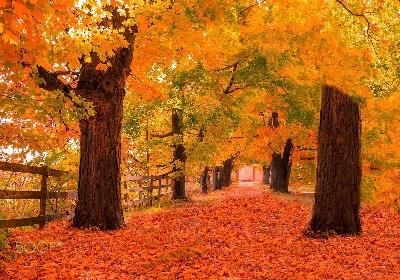
- a)Summer
- b)Autumn
- c)Spring
- d)Winter
Correct answer is option 'B'. Can you explain this answer?
Which season is shown in the given picture?


a)
Summer
b)
Autumn
c)
Spring
d)
Winter
|
|
Rahul Desai answered |
In autumn season, leaves first turn yellow and then fall off from trees.
Which of the following is a water body?- a)Peninsula
- b)Plateau
- c)Mountain
- d)Lake
Correct answer is option 'D'. Can you explain this answer?
Which of the following is a water body?
a)
Peninsula
b)
Plateau
c)
Mountain
d)
Lake
|
|
Rahul Desai answered |
Peninsula, plateau, and mountain are landforms.
Therefore, Lake is a water body.
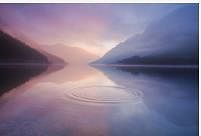
Therefore, Lake is a water body.

What happens to water when we freeze it?- a)It turns into steam
- b)It becomes solid ice
- c)It disappears
- d)It becomes a gas
Correct answer is option 'B'. Can you explain this answer?
a)
It turns into steam
b)
It becomes solid ice
c)
It disappears
d)
It becomes a gas
|
|
Aditi Sharma answered |
When we freeze water, it becomes solid ice. Ice is the frozen form of water and feels cold and hard. It doesn't turn into steam or a gas when we freeze it.
Name the highest mountain in the world.- a)Mount K2
- b)Mount Kanchenjunga
- c)Mount Manaslu
- d)Mount Everest
Correct answer is option 'D'. Can you explain this answer?
Name the highest mountain in the world.
a)
Mount K2
b)
Mount Kanchenjunga
c)
Mount Manaslu
d)
Mount Everest
|
|
Swati Sharma answered |
Mount Everest is Earth's highest mountain above sea level, located in the Mahalangur Himal sub-range of the Himalayas.
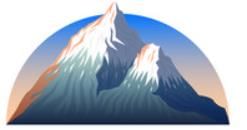

Which part of the Earth is the hottest?- a)Core
- b)Crust
- c)Mantle
- d)None of the above
Correct answer is option 'A'. Can you explain this answer?
Which part of the Earth is the hottest?
a)
Core
b)
Crust
c)
Mantle
d)
None of the above
|
|
Naina Sharma answered |
Core is the hottest layer of the Earth having temperature of approximately. 50,000 degree Celsius.
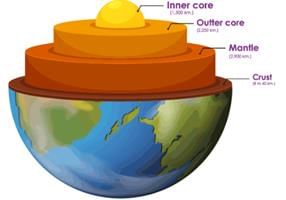

Identify the landforms shown in the given picture.
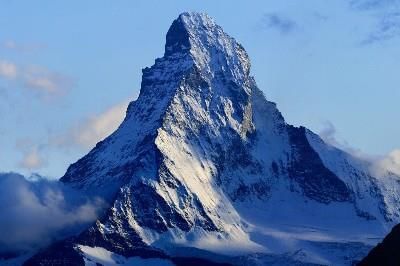
- a)Plateau
- b)Mountain
- c)Plain
- d)Valley
Correct answer is option 'B'. Can you explain this answer?
Identify the landforms shown in the given picture.


a)
Plateau
b)
Mountain
c)
Plain
d)
Valley
|
|
Neha Verma answered |
Mountain is an elevated part of land which is very high and steep.
Which of the following will help to keep our environment clean?

- a)Do not throw garbage on the street
- b)Do not waste paper
- c)Plant more and more trees
- d)All of the above
Correct answer is option 'D'. Can you explain this answer?
Which of the following will help to keep our environment clean?


a)
Do not throw garbage on the street
b)
Do not waste paper
c)
Plant more and more trees
d)
All of the above
|
|
Swati Sharma answered |
Help to keep our environment clean is:
- Do not throw garbage on the street
- Do not waste paper
- Plant more and more trees
Which of the following is an INCORRECT match?
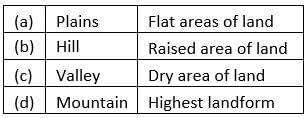
- a)A
- b)B
- c)C
- d)D
Correct answer is option 'C'. Can you explain this answer?
Which of the following is an INCORRECT match?


a)
A
b)
B
c)
C
d)
D
|
|
Pranav Singh answered |
Valley is the low land area between mountains or hills.
What do we call water that is clean and safe for drinking?- a)Salty water
- b)Potable water
- c)Rainwater
- d)Ocean Water
Correct answer is option 'B'. Can you explain this answer?
What do we call water that is clean and safe for drinking?
a)
Salty water
b)
Potable water
c)
Rainwater
d)
Ocean Water

|
Gunjan Lakhani answered |
- Answer: B: Potable water
- Potable water is water that is safe for humans to drink.
- This water is free from harmful contaminants and pathogens.
- It undergoes treatment processes, including filtration and disinfection, to ensure safety.
- Other options like salty water, rainwater, and ocean water are not safe to drink without treatment.
Moving a called ________.- a)Wind
- b)Light
- c)Sunshine
- d)None of the above
Correct answer is option 'A'. Can you explain this answer?
Moving a called ________.
a)
Wind
b)
Light
c)
Sunshine
d)
None of the above
|
|
Rahul Desai answered |
Moving air is called Wind.
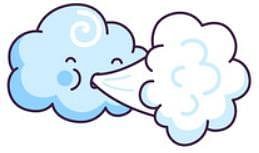

Which of the following is often seen often a rainfall?- a)Night
- b)Rainbow
- c)Snowfall
- d)Both (a) and (c)
Correct answer is option 'B'. Can you explain this answer?
Which of the following is often seen often a rainfall?
a)
Night
b)
Rainbow
c)
Snowfall
d)
Both (a) and (c)
|
|
Neha Verma answered |
A rainbow is often seen after a rainfall.


A piece of land surrounded by water on three sides is called a________ and a piece of land surrounded by water on all sides is called a/an_________.
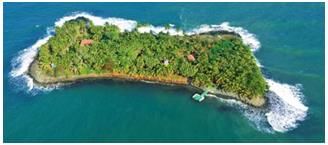
- a)Peninsula, island
- b)Lake, island
- c)Pond, lake
- d)River, lake
Correct answer is option 'A'. Can you explain this answer?
A piece of land surrounded by water on three sides is called a________ and a piece of land surrounded by water on all sides is called a/an_________.


a)
Peninsula, island
b)
Lake, island
c)
Pond, lake
d)
River, lake
|
|
Naina Sharma answered |
A piece of land surrounded by water on three sides is called a peninsula, whereas island is surrounded by water on all sides.
The seven large landmasses on the Earth are called________.- a)Island
- b)Mountain
- c)Continents
- d)Peninsula
Correct answer is option 'C'. Can you explain this answer?
The seven large landmasses on the Earth are called________.
a)
Island
b)
Mountain
c)
Continents
d)
Peninsula
|
|
Neha Verma answered |
Continents are large landmasses found on Earth. They are seven in number.
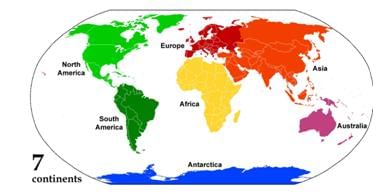

Which is the smallest continent in the world?- a)Australia
- b)Africa
- c)Asia
- d)Europe
Correct answer is option 'A'. Can you explain this answer?
Which is the smallest continent in the world?
a)
Australia
b)
Africa
c)
Asia
d)
Europe
|
|
Naina Sharma answered |
Australia is the smallest continent in the world. There are seven continents in total and Australia is smallest among all.
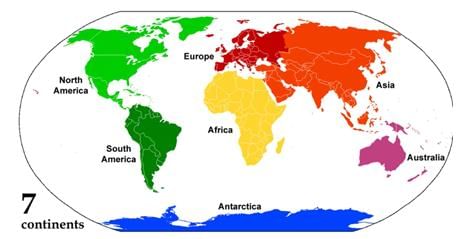

Which of the following things can float on water?- a)A rock
- b)A feather
- c)A rubber ball
- d)A heavy book
Correct answer is option 'C'. Can you explain this answer?
a)
A rock
b)
A feather
c)
A rubber ball
d)
A heavy book
|
|
Aditi Sharma answered |
A rubber ball can float on water because it's light and can stay on the surface. Rocks and heavy books will sink, while feathers are very light but might also sink.
__________ covers most of our Earth.- a)Land
- b)Water
- c)Sand
- d)Salt
Correct answer is option 'B'. Can you explain this answer?
__________ covers most of our Earth.
a)
Land
b)
Water
c)
Sand
d)
Salt
|
|
Neha Verma answered |
Water covers approximately 70 % part of our Earth.
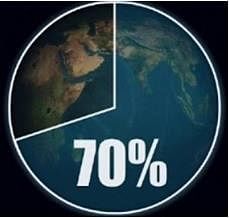

Weather always:
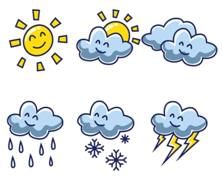
- a)Changes
- b)Never changes
- c)Stays for a long time
- d)All of the above
Correct answer is option 'A'. Can you explain this answer?
Weather always:


a)
Changes
b)
Never changes
c)
Stays for a long time
d)
All of the above
|
|
Pranav Singh answered |
Weather always changes, whereas season stays for a long time.
Paper can be__________ and that paper can be used to make newspaper.

- a)Made
- b)Planted
- c)Destroyed
- d)Recycled
Correct answer is option 'D'. Can you explain this answer?
Paper can be__________ and that paper can be used to make newspaper.


a)
Made
b)
Planted
c)
Destroyed
d)
Recycled
|
|
Rahul Desai answered |
Paper can be recycled and that paper can be used to make other products such as newspaper, boxes, etc.
Which of the following on unscrambling will give the name of the largest island in the world?- a)ENERLNADG
- b)UABC
- c)ADLNIEC
- d)NAJPA
Correct answer is option 'A'. Can you explain this answer?
Which of the following on unscrambling will give the name of the largest island in the world?
a)
ENERLNADG
b)
UABC
c)
ADLNIEC
d)
NAJPA
|
|
Pranav Singh answered |
Greenland is the world's largest island covering 2,175,597 square kilometers.
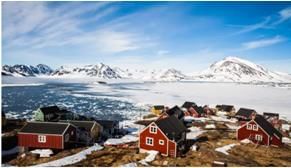

Identify the water body shown in the given picture.
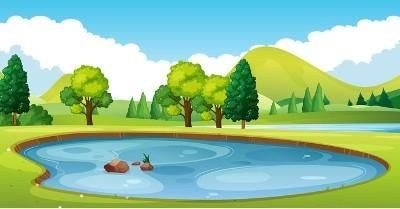
- a)Pond
- b)River
- c)Lake
- d)Ocean
Correct answer is option 'A'. Can you explain this answer?
Identify the water body shown in the given picture.


a)
Pond
b)
River
c)
Lake
d)
Ocean
|
|
Pranav Singh answered |
Pond is a very small water body having freshwater.
It is a sunny day. Rahul feels hot standing outside in the sun. He has an umbrella. Rahul opens the umbrella and stands under it.


Identify the season.- a)Summer
- b)Winter
- c)Monsoon
- d)Autumn
Correct answer is option 'A'. Can you explain this answer?
It is a sunny day. Rahul feels hot standing outside in the sun. He has an umbrella. Rahul opens the umbrella and stands under it.



Identify the season.
a)
Summer
b)
Winter
c)
Monsoon
d)
Autumn
|
|
Rahul Desai answered |
Itisasunny Day Means Sun is bright and hot. Rahul opens his umbrella to protect himself from the Sun. Thus, it is summer season.
In which of the following seasons, we prefer to wear cotton clothes?

- a)Summer
- b)Autumn
- c)Spring
- d)Winter
Correct answer is option 'A'. Can you explain this answer?
In which of the following seasons, we prefer to wear cotton clothes?


a)
Summer
b)
Autumn
c)
Spring
d)
Winter
|
|
Swati Sharma answered |
We prefer to wear cotton clothes in the summer season to keep ourselves cool.
How do we use water to drink?- a)We pour it on the floor
- b)We swim in it
- c)We put it in a cup and sip
- d)We use it for coloring
Correct answer is option 'C'. Can you explain this answer?
a)
We pour it on the floor
b)
We swim in it
c)
We put it in a cup and sip
d)
We use it for coloring
|
|
Aditi Sharma answered |
We use water to drink by putting it in a cup or glass and sipping it. Pouring it on the floor, swimming in it, and using it for coloring are not the usual ways we use water for drinking.
3Rs rule for conservation of environment means:- a)Resize, redesign and reject
- b)Reduce, reuse and recycle
- c)Reject, reuse and refuse
- d)Reduce, refill and restart
Correct answer is option 'B'. Can you explain this answer?
3Rs rule for conservation of environment means:
a)
Resize, redesign and reject
b)
Reduce, reuse and recycle
c)
Reject, reuse and refuse
d)
Reduce, refill and restart
|
|
Rahul Desai answered |
3Rs:
Reduce: Cutting down the use of resources
Reuse: Using the resources again for the same purpose
Recycle: Converting old products into new ones
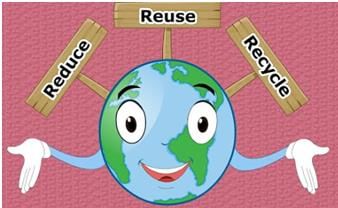
Reduce: Cutting down the use of resources
Reuse: Using the resources again for the same purpose
Recycle: Converting old products into new ones

Most of Earth's freshwater is in:

- a)Oceans
- b)Atmosphere
- c)Rivers, lakes, streams, etc.
- d)All of the above
Correct answer is option 'C'. Can you explain this answer?
Most of Earth's freshwater is in:


a)
Oceans
b)
Atmosphere
c)
Rivers, lakes, streams, etc.
d)
All of the above
|
|
Naina Sharma answered |
Rivers, lakes and streams are the source of fresh water, whereas, ocean has salty water. Atmosphere is the air around us.
Match the Column I with Column II.
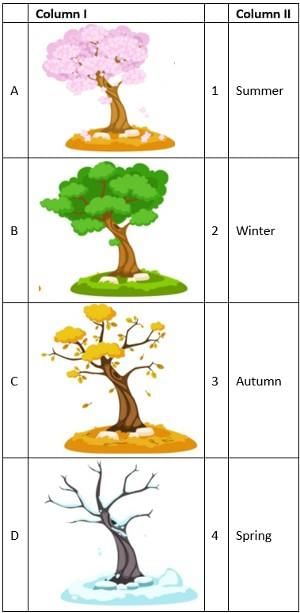
- a)A-4, B-1, C-3, D-2
- b)A-1, B-2, C-3, D-4
- c)A-4, B-3, C-2, D-1
- d)A-2, B-1, C-3, D-4
Correct answer is option 'A'. Can you explain this answer?
Match the Column I with Column II.


a)
A-4, B-1, C-3, D-2
b)
A-1, B-2, C-3, D-4
c)
A-4, B-3, C-2, D-1
d)
A-2, B-1, C-3, D-4
|
|
Pranav Singh answered |
In spring, the weather begins to get warmer and trees and other plants grow new leaves. Summer is the hottest season and has long, usually sunny, days. In the fall, the weather becomes mild and leaves start falling from many types of trees. Winter is the coldest season, with short days.
Which of the following options will replace ‘X’ and ‘Y’ in the given table.
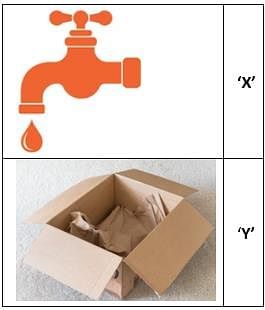
- a)X-Reduce, Y-Reuse
- b)X-Reuse, Y-Reduce
- c)X-Recycle, Y-Reduce
- d)None of the above
Correct answer is option 'A'. Can you explain this answer?
Which of the following options will replace ‘X’ and ‘Y’ in the given table.


a)
X-Reduce, Y-Reuse
b)
X-Reuse, Y-Reduce
c)
X-Recycle, Y-Reduce
d)
None of the above
|
|
Neha Verma answered |
We can reduce the usage of water by turning off the tap. We can reuse the carton to carry things from one place to another or to store things.
_________is the uppermost layer of the Earth.- a)Crust
- b)Mantle
- c)Core
- d)None of the above
Correct answer is option 'A'. Can you explain this answer?
_________is the uppermost layer of the Earth.
a)
Crust
b)
Mantle
c)
Core
d)
None of the above
|
|
Rahul Desai answered |
Crust is the uppermost layer of Earth on which we live.
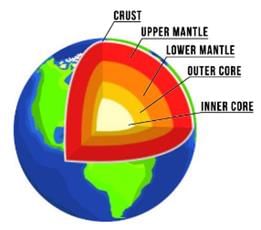

What is the capital of India?- a)Delhi
- b)Mumbai
- c)Tokyo
- d)Colombo
Correct answer is option 'A'. Can you explain this answer?
What is the capital of India?
a)
Delhi
b)
Mumbai
c)
Tokyo
d)
Colombo
|
|
Neha Verma answered |
Delhi is the national capital of India.
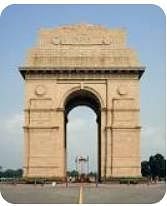

Chapter doubts & questions for Local Landscapes - Science for Grade 2 2025 is part of Grade 2 exam preparation. The chapters have been prepared according to the Grade 2 exam syllabus. The Chapter doubts & questions, notes, tests & MCQs are made for Grade 2 2025 Exam. Find important definitions, questions, notes, meanings, examples, exercises, MCQs and online tests here.
Chapter doubts & questions of Local Landscapes - Science for Grade 2 in English & Hindi are available as part of Grade 2 exam.
Download more important topics, notes, lectures and mock test series for Grade 2 Exam by signing up for free.
Science for Grade 2
28 videos|93 docs|53 tests
|

Contact Support
Our team is online on weekdays between 10 AM - 7 PM
Typical reply within 3 hours
|
Free Exam Preparation
at your Fingertips!
Access Free Study Material - Test Series, Structured Courses, Free Videos & Study Notes and Prepare for Your Exam With Ease

 Join the 10M+ students on EduRev
Join the 10M+ students on EduRev
|

|
Create your account for free
OR
Forgot Password
OR
Signup to see your scores
go up within 7 days!
Access 1000+ FREE Docs, Videos and Tests
Takes less than 10 seconds to signup






